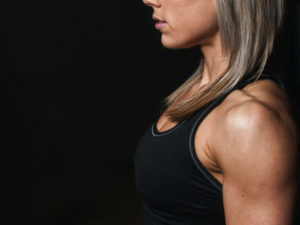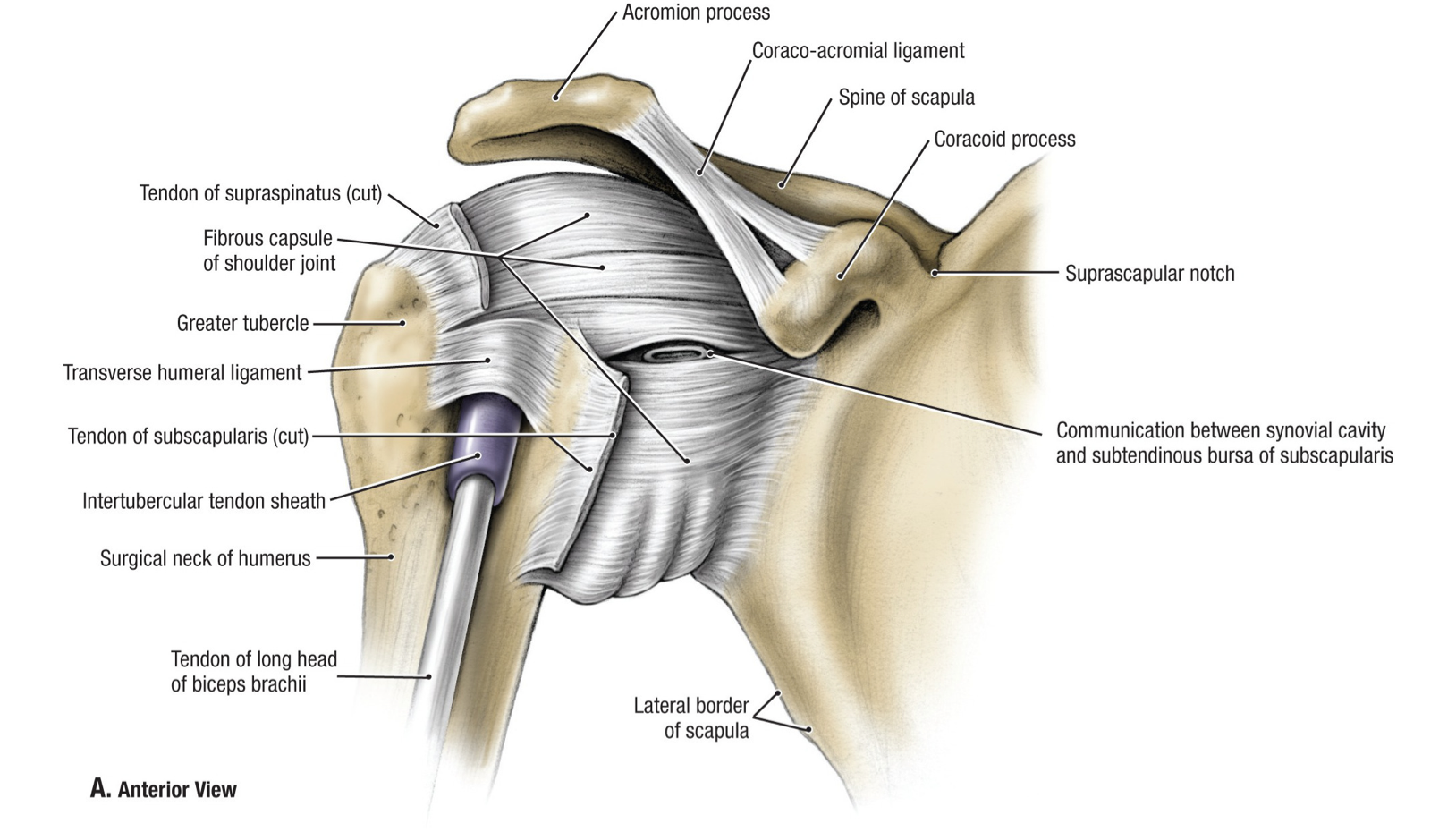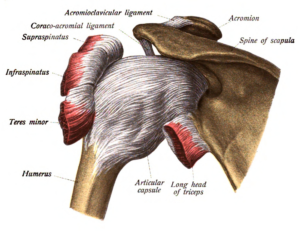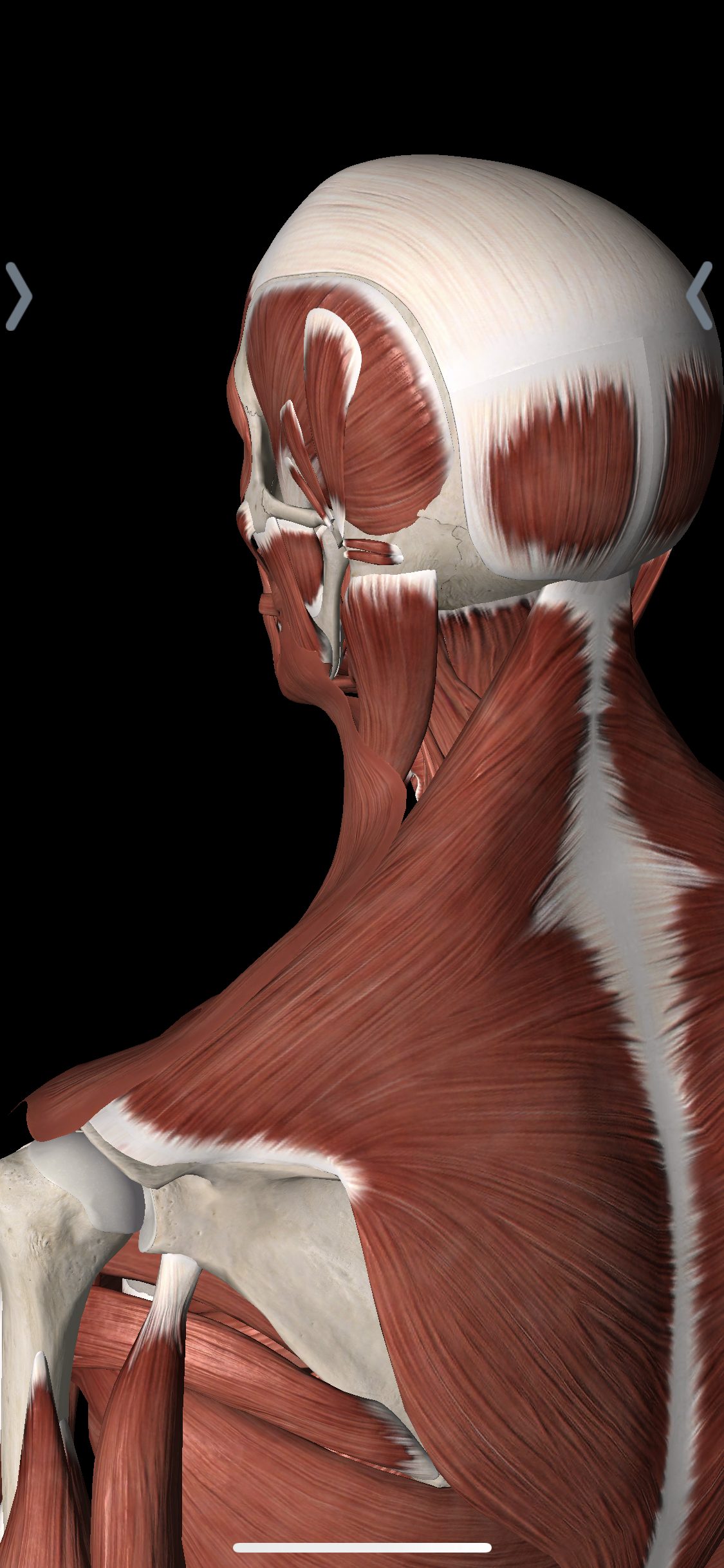Let’s talk shoulders.
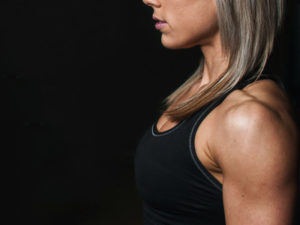 Let’s face it: strong looking arms and chest can be the hallmark of your fitness goals. Having good muscular definition in the shoulders can build the physique that you're striving for. That "ball-and-socket" joint does so much for us every day and treating them right can pay off.
Let’s face it: strong looking arms and chest can be the hallmark of your fitness goals. Having good muscular definition in the shoulders can build the physique that you're striving for. That "ball-and-socket" joint does so much for us every day and treating them right can pay off.
But things don’t always feel great. You probably have a hard time findings someone who doesn't have shoulder pain themselves. Some injuries are traumatic, some injuries come from repetitive stress, and some injuries just come from what seems out of nowhere.
To talk about injury prevention, let’s first establish some facts and dispel some rumors.
Shoulder Anatomy:
(Feel free to skip below to 'Reasons your Shoulder Hurts' and 'Bulletproofing Your Shoulders' for practical advice)
Shoulder = 4 Joints
- The Glenohumeral Joint –Called the “ball in socket” but not exactly accurate. Big ball, little socket that makes the shoulder inherently unstable. Your shoulder can do so many things like get that hard to scratch area on your upper back or pitch a baseball.
- The Acromioclavicular Joint -- Where your collarbone meets your actual shoulder blade (scapula). Not as celebrated as the notorious GH joint, but if restricted can limit shoulder overhead and across the body movement
- The Sternoclavicular Joint -- The area where your collar bone meets your chest. Like its acromial counterpart, is pretty heavily involved in shoulder overhead motion and pressing
- The Scapulothoracic Joint – Simply put, the shoulder blade moving on your rib cage. Technically speaking its more of a pseudo-joint, but huge for shoulder health.

The Rotator (NOT ROTARY) Cuff
As with the joints of the shoulder the rotator cuff is made up of four muscles.
With all that freedom of movement, the rotator cuff (RTC) helps to keep that big ball of the humerus, in good congruence with the much smaller glenoid fossa (the socket). Be thankful for that RTC to keep it there when you're ripping those kettlebells overhead or going for your 1RM on incline bench.
The buzzword here: DYNAMIC STABILITY. Your happy shoulder gets to do what it likes without dislocating or subluxing and that requires happy joints and happy rotator cuff muscles.
Here are the four big players:
Advanced shoulder mechanics/biomechanics/kinematics discussions are always welcome with your friendly neighborhood physical therapist, but at the risk of becoming too long winded, let’s talk some basics.
Each one of these four muscles produce shoulder motion. Supraspinatus helps with the initial bit of abduction. Infraspinatus and teres minor are the two primary external rotators. Subscap assists the lats, pec, and teres major to internally rotate the shoulder. They ALL,however, act like a suction cup, pulling the arm bone to the shoulder blade.
Don't be fooled though! Big muscle groups like the Lats, Pecs, Deltoid, Upper Trap, and Teres are the big, dominant, and more efficient movers. The smaller, more refined RTC muscles are the stabilizers.
The RTC has a teamwork responsibility that enable the ball to sit on that small tee when you're going for that PR, on the 5th or 6th set, and when you're dropping down for that burpee. It is in the absence of this teamwork, along with some other key shoulder stabilization components that we begin to see increased likelihood of injury.
Shoulder Injury Run Down
Is it the joint? Maybe. Is it the muscle? Probably. Is it the capsule? Most likely.
The truth is that shoulder inflammation does not just stop at the only structure involved. It doesn't just reach the boundary of the next muscle and stone wall there. So rather than trying to parse out precisely which shoulder component is actively holding you up, its better to think of it as a confluence of things.
Muscle stiffness or trigger points contribute to shoulder pain at end range. The capsule gets stiff in that range and the joint lacks the right mechanics… The shoulder bones connected to the, armmmm boneeee and so on and so on.
Weight lifting incorporating repeated shoulder motion can result in a myriad of different issues. Most importantly if the rotator cuff team isn’t working together. It is this that results in the all-too-common discomfort with shoulder overhead and behind the back motion.
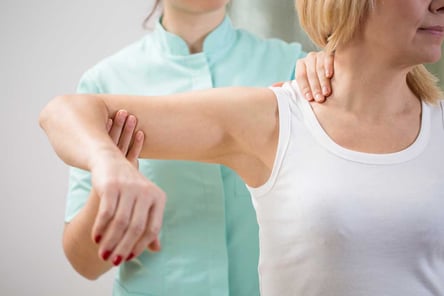
4 Potential Reasons Your Shoulder Hurts
These aren't the only reason your shoulder hurts and this is not a substitute for a thorough diagnostic examination by a PT. That being said, lets talk about some common issues folks that regularly work out may run into in no specific order
Injury to the Labrum
Remember the ball on the small tee? There is a small complex on the top of that tee called your labrum that improves the surface area of contact with the ball and keeps it positioned correctly.
There are 4 major types of labral injuries that do and do not involve the bicep tendon. Injuries here increase the likelihood of dislocation and can result in significant pain and apprehension with motion
Bicep Tendonitis
Your bicep splits at the shoulder and has two attachments: one attaches to the bony area under your acromion and the other attaches to the labrum itself. Simply put, tendonitis is irritation of the tendon. It can occur with and without the previously discussed labral injury meaning that it usually involves that long head of the bicep.
Subacromial Bursitis
One of your rotator cuff muscles, the supraspinatus, runs underneath a bony cliff in an area called the subacromial space. Because of the bony ceiling of the subacromial space, there is a fluid filled sac that prevents any rubbing of that muscle. If that sac itself becomes inflammed, it can mimic the symptoms of actual muscle/tendon irritation.
Shoulder Impingement
True shoulder impingement is debatable, but for the sake of the discussion, the hypothesized issue is listed here:
Lets say that bursa fails to protect that supraspinatus muscle. That teamwork we talked about before? It's dysfunctional--not working right. That tendon smashes underneath of the acromion(collar bone) when that lower rotator cuff fails to adequately control the upward glide of the shoulder.
The tendon repeatedly gets pinched in that area, we start to observe some microtrauma. Common complaints here are a painful arc of motion with overhead reaching and pain and discomfort with reaching behind the back.
Bulletproofing your Shoulders
Balance is key.
Lats, pecs, teres major, and subscap are large muscles that commonly produce internal rotation. If bench pressing, lat pull down's, and row's are the only 3 tools in your arsenal, you're missing out.
Not only are there great shoulder muscles that help to improve your shoulder mechanics, they can improve the quality of you lifts and decrease risk of injury. The back part of the rotator cuff by comparison to those huge muscles are much smaller. As we've highlighted, however, they serve an important role in improving the mechanics of moving the shoulder on the glenoid. The goal is the balance the relative strength of those large muscles to those that help to stabilize the shoulder.
Two quick exercises to improve shoulder health:
90/90 External Rotation
This external rotation drill features lower rotator cuff activation in what we call the 90/90 position. By retracting the shoulder blade and utilizing the lower rotator cuff to externally rotate the shoulder, we are challenging the stability of the shoulder. Try this on while super-setting with pressing activities to get these small, but hugely important muscles in the game to improve rotational control
Serratus Slide
The serratus anterior is a hugely important muscle for normal shoulder mechanics. It protracts and upwardly rotates the shoulder--two hugely important motions for pressing and overhead shoulder motion. Trying to keep your hands, elbows, and shoulders in line, try sliding the arms overhead with light resistance at the wrists to work on shoulder protraction while adding in that lower rotator cuff activation. It reinforces the right mechanics to decrease the risk of shoulder impingement. Consider it a shoulder multivitamin
Of course if all else fails, and you cant shake the shoulder discomfort and lift or move the way you want, reach out for help. A quality PT evaluation can help determine which one of the many components of this truly complex joint are involved and develop the right kind of intervention to get you back to the gym.
Reach out to Glackin Physiotherapy, LLC on our contact page to get a physical therapy shoulder assessment, treatment, or training advice in Columbia, Maryland, 21045.
Physical therapy for the shoulder in Columbia and Baltimore, Maryland
If you have shoulder pain while lifting reach out to our office today!

